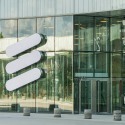
Ericsson, one of the world's largest 5G networking vendors, claims open RAN equipment is ultimately more expensive than traditional, classic RAN equipment.
"The reality is that the performance of open RAN does not compare to integrated RAN," the company told the FCC. "Even if the cost saving estimates were true on a per-unit cost basis, the two pieces of equipment are not delivering the same level of performance. Ericsson's own estimates have indicated that open RAN is more expensive than integrated RAN given the need for more equipment to accomplish what purpose-built solutions can deliver and increased systems integration costs."
The company's statement is noteworthy considering players ranging from Japan's Rakuten to Inland Cellular, a tiny wireless service provider in eastern Washington and North Central Idaho, generally argue that open RAN equipment is 40% cheaper than traditional, classic RAN equipment.
"Open RAN will allow for cost savings over proprietary architectures," open RAN vendor Mavenir declared in its own recent meeting with FCC officials. The company said open RAN equipment can reduce network providers' operating expenses by 40% and total cost of ownership by 36%.
Not opposed to open RAN
Importantly, though, Ericsson's North American CTO Mike Murphy presented to the FCC that the vendor is not an opponent of open RAN technology. "Ericsson has dedicated a number of resources to making O-RAN Alliance specifications successful, delivering about 1000 of 7000 total specifications," the company told the FCC, citing Murphy's presentation. "Indeed, without Ericsson's contributions to the O-RAN Alliance, the timeline for more fully developed standards would likely be even further out in the future."
Ericsson argued that open RAN is simply not yet ready for broad, cutting-edge network deployments. "The lack of completed standards does not mean that O-RAN technologies cannot be deployed today," Ericsson said. "But it does mean that any such deployments require individual vendors to come to mutual agreements – a far cry from the 'plug-and-play' vision of a complete set of open RAN network interface standards."
Ericsson isn't the only company cautioning the FCC on open RAN. Nokia – another major 5G equipment vendor – made similar arguments in a recent presentation to the FCC. "While there are some vendors that only offer open RAN architecture and/or limited RAN products, Nokia is able to provide a choice of classical or open RAN depending on the desires of our customers," Nokia explained. "To date, the vast majority of service providers have chosen classical RAN solutions, deferring investment in open RAN until further commercial maturity has been demonstrated."
The company also took issue with the notion that open RAN equipment is dramatically cheaper than traditional, classic RAN equipment. But it did not provide any definitive statements on the matter.
Wary of mandates
Broadly, Ericsson, Nokia and others cautioned the FCC against sweeping mandates that would require network operators to use open RAN equipment. That topic surfaced during the development of the FCC's "rip and replace" program that is designed to finance the removal of Huawei and ZTE equipment from US networks over security concerns. But such mandates could also be applied to other FCC efforts including the distribution of billions of dollars in subsidies to finance the construction of networks in rural and underserved locations in the US.
At a high level, Western diplomats have embraced open RAN as a possible counter to low-cost equipment from Chinese vendors. After all, open RAN technology promises to allow network operators to mix and match equipment from a variety of vendors, thanks to standardized interfaces – thus setting the stage for the integration of equipment from trusted, Western suppliers.
However, many in the industry argue that open RAN is not yet mature. They contend that government mandates that would require the use of the technology – in a furtherance of geopolitical goals – would be misguided.
"The US has clearly demonstrated that open and intense competition, not government mandates, is the most effective way to mobilize the telecom industry to enable unprecedented innovation and value creation," Ericsson told the FCC. "The US led the world in 4G and the 'app economy' not by insisting on any particular network standard, but by creating an open, predictable and attractive investment climate for all industry stakeholders and allowing operators to select the best technology based on their needs."
However, such arguments don't stretch into the prospect of government funding for open RAN development. Equipment vendors and network operators of all shapes and sizes, in both the US and Europe, continue to urge policymakers to allocate funding for open RAN research and testing.
Related posts:
— Mike Dano, Editorial Director, 5G & Mobile Strategies, Light Reading | @mikeddano
About the Author(s)
You May Also Like











